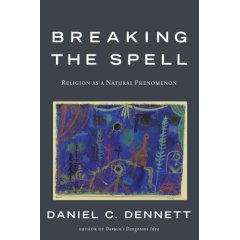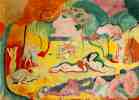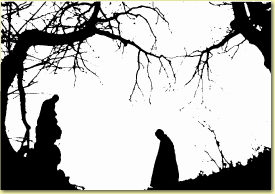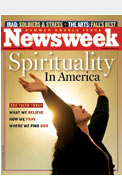 Why did Dogen write? Why do we read him? And what do these questions mean for how we should translate him?
Why did Dogen write? Why do we read him? And what do these questions mean for how we should translate him?
I’d like to thank Lisa Melyan for inspiring these questions with her comment on my post Dogen again, discussing the translation of Dogen’s famous syllogism, which starts:
Following the Buddha Way really means following yourself.
Her comment in its entirety:
You say you do not know what it means to be “enlightened by all things,” and perhaps you take issue with the phrase “actualized by myriad things” as well.
These phrases and Dongshan’s “teaching of the inanimate” have jumped out at me as my practice has deepened, and they have the ring of deep truth in my direct experience of reality.
The concept is concrete, not wishy-washy, in my experience. I believe it refers to the ability to respond in all conditions, to start from zero and simply respond spontaneously. When I quickly jump over rocks and driftwood at the beach, I am being enlightened by those things, “actualized” by them- jump here, turn here. No thought. Those who think think think (should I step here, I’m not sure) are stuck at the other end of the shoreline.
Lots of meat here, but I’ll focus on the subtle issues her comment raises about the meaning, purpose, and process of Dogen’s writings and/or their translation. When reading Dogen, on the one hand, we can focus on the fact that, at this moment, I see a page in front of me with squiggly black ink marks forming Roman letters making up English words composing sentences which via some physical and mental process I have developed I interpret and as a consequence experience certain sensations and “thoughts”. I may further experience those sensations as pleasant or rewarding, in the broadest sense of the term. The reward may take the form of a feeling of religious awe, or derive from a sense that I have learned something new that will be useful to me in the future (such as on my path of self-development), be related to “recognition”, a known pleasure factor, or be correlated with a sense of shared consciousness, which may take on added weight in this case since the sharing in question is occurring across a span of more than seven hundred years.
Potentially more usefully, we can also take a deconstructionist tack and view Dogen’s writings and their translations in the context of the societal structure, the implicit and explicit assumptions, and the intentions that generated them. Why did Dogen write Shobogenzo?
Why did Dogen write?
It’s reasonable to assume that a highly actualized person like Dogen had a crystal clear internal model of what he was doing—he was presumably not simply writing out of boredom. Perhaps Shobogenzo was a form of meditation for our medieval master, a type of private painting, with the scroll as canvas and calligraphic ink as paint, a structured way for him to clarify and build out his own thinking? I have no doubt that his writings do involve that aspect, but when you consider that Dogen devoted the greater portion of his life to building and running Eiheiji as a place for teaching and practice, we have to conclude that a major objective of his in writing Shobogenzo was teaching—to convey some kind of message, or provide some kind of insight, or offer some kind of motivation, to students of the way.
This interpretation is supported by the fact that Dogen gave explicit instructions on the order of the SBGZ fascicles, placing Genjo Koan at the beginning, something he hardly would have worried about if this was his private notes. Elsewhere as well, he explicitly states that his objective is to teach others.
Even a document the objective of which we agree is to teach or communicate could have very different meanings depending on exactly who it targets. Was Dogen addressing advanced master students, monks, laypeople, amateurs like us? Dogen switched gears over the years on the issue of whether shukke (leaving your home and entering the priesthood) was a prerequisite for making meaningful spiritual progress, as he aged moving towards the position that in fact it was, so it’s likely that he did not think beyond the monks at Eiheiji when considering his target audience, but in reality the monks at Eiheiji in the first half of the thirteenth century were probably much like those there today: many had to be there to learn the family business; others entered the priesthood out of an accident of birth; the majority were probably just going through the paces. I suggest that it was those people—not so different from you and me—that Dogen was targeting with SBGZ.
Implications for translators
We see, then, that Dogen’s magnum opus was a teaching document targeting the average student. What does this imply about how it should be translated?
It’s too much to hope that we will uncover a forgotten fascicle, “Instructions for the Translator”, as the manuscript of Bendowa was discovered, three centuries after Dogen’s death, hidden in a Kyoto monastery. Of course, it’s understandable that Dogen saw fit to leave instructions for the tenzo (cook), but not the translator; the tenzo is in many ways the linchpin of the monastery, as well as being an extremely challenging position from the point of view of practice. Given the huge volumes of Chinese Buddhist literature that he clearly knew in depth, not to mention the fact that he studied in China and probably spoke the language fluently, Dogen must have understood the question of translation, but sadly failed to leave us with any clues as to how we, as translators, should proceed.
But if we are correct that Dogen wrote SBGZ to teach the average student, certainly that must also be the goal of a translation. This means that our translations should not make unnecessary use of expert jargon. You may say that the words Dogen used, perhaps manpou (myriad dharmas), to take just one example, were expert jargon, but they were most assuredly not—such words were familiar everyday terms to the people of that era.
The purpose of this post is not to praise my own translations, but a religious teacher who has asked me not to use his name commented on my Genjo Koan translation as follows:
Also, I like the fact that you do not use terms like “dharma,” the use of which I think is a cop-out…Unlike many other translations on the market, you help people become clear instead of becoming confused.
Translating manpou as “myriad things” also qualifies as a “cop-out”, absolving the translators of the need to figure out what it means and how to render it in a meaningful way in the target language. But actually it’s worse than laziness, because it confuses and distracts the reader, completely contradicting Dogen’s intent, namely that his writings teach. Readers who have read enough of this type of translation may begin to imagine they actually “know” what this construct means. Translators also use these literal translations, as far as I can tell, as a means to give their work more of a “religous”, “scriptural” patina.
Because that’s what this is, scripture, right? It’s a really important, religious book, about really holy, religious stuff, written by a really sanctified, religious guy, right? For us Westerners that attended Sunday School or its equivalent in our childhood, “scripture” retains a unique emotional smell, no matter how far we have come from our Judeo-Christian roots. The biblical verses “God created the heavens and the earth”, or “The meek shall inherit the earth”, resonate in our minds far beyond their surface meanings; they are songs of angels, the voice of God, still yielding that old internal tingle. So it’s not surprising that Western translators of Dogen, working with something that obviously has heavy “scriptural” aspects, would, consciously or not, choose a style which invokes their own scriptural tradition, both in terms of vocabulary and phrase structure.
Which is particularly ironic since Dogen is precisely the one who warns us against scripture, such as in Bendowa, where he cautions us:
Make no use of incense or bowing or chanting or ceremonies or scriptures.
Another implication for the translator of the fact that Dogen is addressing the typical student is not only that we should avoid overwrought vocabulary and sentence structure, but that in trying to figure out what Dogen is saying in his original medieval Japanese we should prefer an interpretation which matches a scenario where he is preaching to the average practitioner—a guideline of no small import, considering the paucity of other clues at our disposal in trying to decipher Dogen’s dense, opaque, and unconventional language. Many translators, however, take exactly the opposite tack—they prefer (or invent) an interpretation which is most complex or superficially “Zen-like”, as if Dogen had been addressing only the small number of fully enlightened beings on the planet.
I am not saying that SBGZ should be interpreted at the least-common-denominator level, or that what Dogen is saying is simple or trivial. SBGZ is, in fact, a tour de force presentation of an integrated philosophical and religious view of the utmost profundity. But Dogen’s genius lies precisely in his ability to present those ideas in a way which resonated deeply with the typical practitioner of his day. And so by the same token, the responsibility of those who take it upon themselves to translate Dogen is to map his squiggles from eight centuries ago into a form that accomplishes the same effect for Western students in the 21st century.
In a future post, I’ll apply the thoughts above to Lisa’s insightful comments.
 22 straight hours of Bach’s organ music. All of it. That was the program for BachWerke (7MB PDF program), an ambitious program put on by the Los Angeles Chapter of the American Guild of Organists and St. Cyril of Jerusalem Church last weekend.
22 straight hours of Bach’s organ music. All of it. That was the program for BachWerke (7MB PDF program), an ambitious program put on by the Los Angeles Chapter of the American Guild of Organists and St. Cyril of Jerusalem Church last weekend.
 Daniel Dennett’s
Daniel Dennett’s  Why did Dogen write? Why do we read him? And what do these questions mean for how we should translate him?
Why did Dogen write? Why do we read him? And what do these questions mean for how we should translate him?
 A friend to whom I was explaining neurotheology asked me what the major competing hypotheses or schools of thoughts were in the field. I think there are two: reductionism vs. holism; and direct vs. indirect instrumentalism.
A friend to whom I was explaining neurotheology asked me what the major competing hypotheses or schools of thoughts were in the field. I think there are two: reductionism vs. holism; and direct vs. indirect instrumentalism.
 Today let me introduce you to some neuroscience resources I’ve found useful.
Today let me introduce you to some neuroscience resources I’ve found useful. “Why Has Bodhidharma Left for the East?” is Yong-Kyun Bae’s spellbinding, succulent commentary on the meaning of life.
“Why Has Bodhidharma Left for the East?” is Yong-Kyun Bae’s spellbinding, succulent commentary on the meaning of life. How can a major newsmagazine spend nearly 20 pages on a cover story about spirituality in America and shed almost zero light on the subject?
How can a major newsmagazine spend nearly 20 pages on a cover story about spirituality in America and shed almost zero light on the subject?